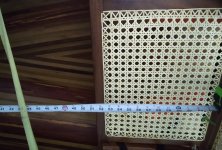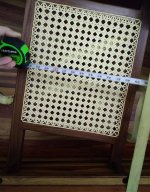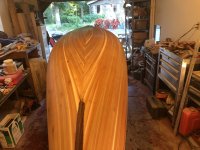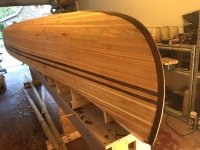I made my first seats 14 and a half inches deep, and weaved them with plastic, yes artificial stuff, cane. I weaved them a little tight. Then when I made the seats for my wood strip, I made the seats 16 inches deep. Same material, but weaved a little looser. They felt more comfortable then my first set. I think next time I'll try natural cane, and I think I would like the curved seats, some one here made some but I can't remember who.
I'm enjoying following along on your prospector build.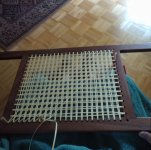 Looking forward to seeing it shined up.
Looking forward to seeing it shined up.
Roy
I'm enjoying following along on your prospector build.
 Looking forward to seeing it shined up.
Looking forward to seeing it shined up.Roy

